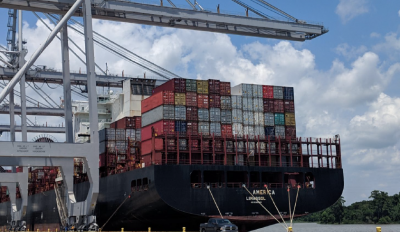
The U.S. Government Accountability Office (GAO) released its report to the Chairman of the Committee on Natural Resources, House of Representatives, last week called “Forced Labor: Better Communication Could Improve Trade Enforcement Efforts Related to Seafood.” The overall recommendation is that CBP improve its communication with stakeholders about what information is needed for enforcement actions to be taken under Section 307 of the Tariff Act. Yet the GAO remained silent on the need for CBP to be more transparent about their decision process, the enforcement actions they take and status of the petitions filed.
In order for CBP to effectively enforce Section 307, the agency needs to share more information about the companies found to be in violation of the law and details about goods held at port under the Withhold Release Orders (WROs) they issue. Transparency increases public accountability for companies by enabling civil society to track repeat offenders and build out a database that forewarns buyers and retailers about bad actors in global supply chains.
The GAO report and recommendation provide insights into the way CBP investigates and processes cases brought to them under the Tariff Act’s section 307. It is based on extensive interviews with staff from 18 NGOs, including members of ILRF’s Campaign for Seafood Workers’ Rights team. While we valued the engagement in the GAO process, we had hoped the recommendations would go farther. The report puts forward one core recommendation, with which CBP already concurs; that CBP should:
“Better communicate to stakeholders the types of information stakeholders could collect and submit to CBP to help the agency initiate and investigate forced labor cases related to seafood, and as appropriate, other goods.”
The GAO recommendation does have the potential to advance a cost-effective approach of community-supported enforcement of the Tariff Act. Yet it should also be in the agency’s interest to better equip the stakeholders collecting and reporting cases of forced labor to them with the information they need to be effective.
During the interviews and in ILRF’s February policy paper called “Combatting Forced Labor and Enforcing Workers’ Rights Using the Tariff Act” we have called on CBP for greater transparency and sought to establish equal access for NGOs and trade unions within CBP’s stakeholder engagement approach.
Congress has acknowledged the need for transparency and included various reporting requirements in Section 741 of the United States-Mexico-Canada Agreement (USMCA). The USMCA requires CBP to provide biannual reports to Congress, which must include: enforcement activities and priorities of CBP on Section 307, number of instances when merchandise was denied entry pursuant to enforcement actions in the preceding 180 days and a description of the merchandise. This will be helpful if the reports are timely and easily accessible to civil society organizations. In sum, the GAO recommendation is helpful if CBP’s approach to improving communications with stakeholders comes with broader two-way transparency – sharing more not only on the information they need, but also sharing more of the information stakeholders need to identify potential violators. Without this two-way information flow, civil society stakeholders will be limited in their ability to help transform industries and combat forced labor and trafficking.


